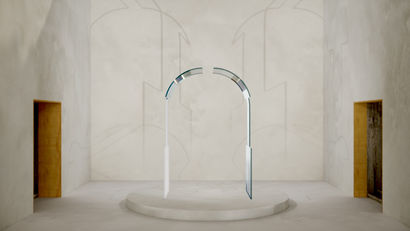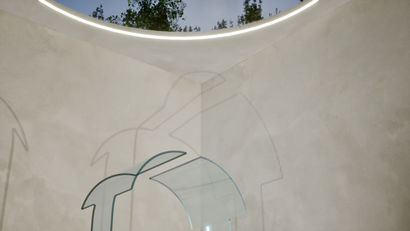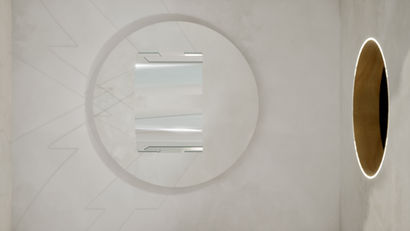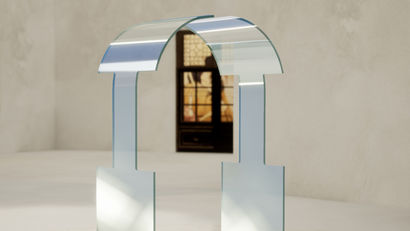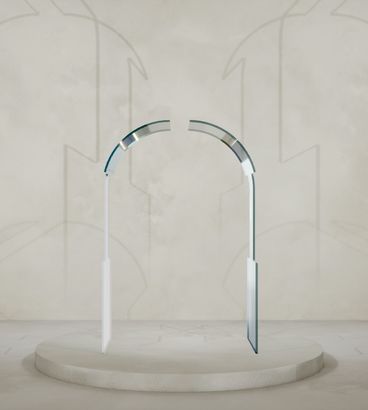In the fully immersive world of virtual reality, The Bell Jar offers a liminal encounter with the soma and psychology of Other and Self; a translucent membrane between the seen and unseen at the thresholds of psychic encounters, surreal apparitions, epiphanies and dystopian dreams. Inside the virtual museum, two crystal-glass figures rise from a circular pedestal, they stand in parallel and perfect harmony. Autonomous and precarious, they lean-in to the point of breaking; they bow to one another but do not touch. Frozen in a balletic pas de deux, these figures crystallise the tension between yearning bodies, as if the real-world pandemic rules on physical distancing have infiltrated the virtual sphere.
Secluded in an alternative reality designed around the Vitruvian principles that promote inter alia the perfect proportions of Renaissance Man, the elusive figures are locked in. The title references an inconoclastic novel, 'The Bell Jar' (1963), by Sylvia Plath. Navigating unpredictable and unknowable states of mind and being, Plath’s iconclastic work explores the soul and will of a free-thinking woman seeking autonomy, dependence and sanity. In this vein and beyond, the virtual sculpture engages and critiques invisible structural constraints while delivering euphoric avenues for escape and release.
